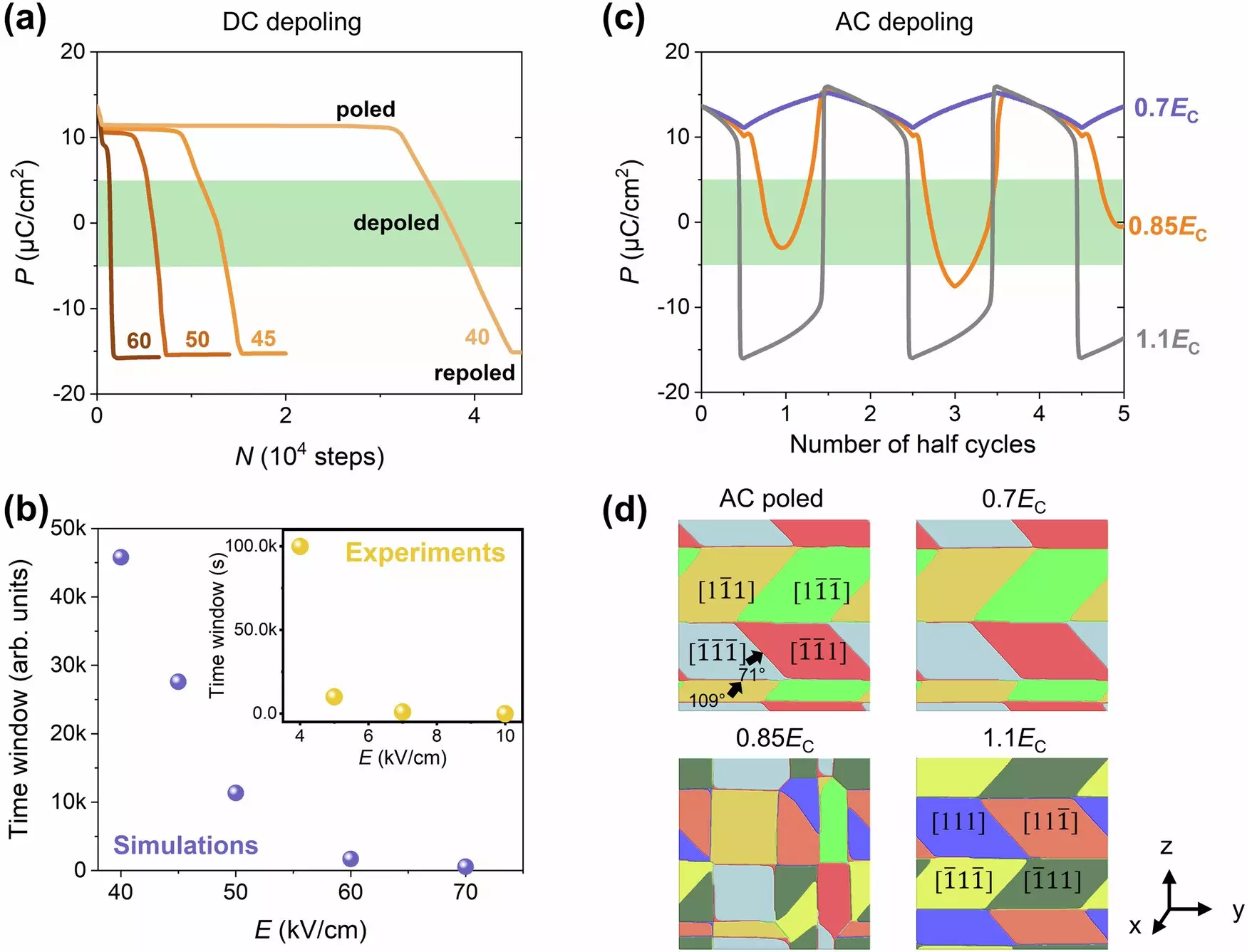Piezoelectric materials play a crucial role in modern technology, impacting fields such as ultrasound imaging, sonar systems, and various sensors. These special materials exhibit a unique property: when subjected to mechanical stress, they produce an electric charge, and conversely, they can change shape when an electric field is applied. This dual functionality makes them indispensable in applications ranging from medical diagnostics to industrial automation.
Central to their functionality is the phenomenon of “poling,” a process by which the internal dipoles—pairs of positively and negatively charged ions—are aligned in a specific direction through an external electric field. This alignment enhances the piezoelectric properties of the materials, allowing devices to generate and sense sound waves effectively. However, maintaining this alignment in the face of heat and pressure poses significant challenges for the utility and longevity of these devices.
The performance of piezoelectric materials deteriorates when exposed to elevated temperatures or high pressures, which can disrupt the alignment of dipoles. Disturbances can occur even at relatively low temperatures, around 70°C, underscoring the vulnerability of these materials. Such issues complicate manufacturing and usability, as they can lead to inefficient operation or complete failure of ultrasound devices. In many cases, the only solution has involved disassembling the devices, exposing the materials to excessively high temperatures (in the vicinity of 300°C), and then re-aligning the dipoles through poling processes.
The irony lies in the fact that while piezoelectric devices represent significant investments in technology, the cost and complexity of maintaining their integrity often lead to their premature disposal. This raises not only economic concerns but also environmental implications, as valuable materials are wasted.
Recent research has introduced a groundbreaking technique that allows for the depoling and repoling of piezoelectric materials at room temperature, effectively transforming how these materials are handled in medical and technological applications. The technique, detailed in the study “Electrical De-poling and Re-poling of Relaxor-PbTiO3 Piezoelectric Single Crystals without Heat Treatment,” published in Nature Communications, presents a feasible solution to the longstanding issue of preserving the properties of piezoelectric devices without the detrimental effects of high temperatures.
The innovation primarily derives from utilizing alternating current (AC) electric fields for both depoling and repoling the materials. While traditional methods relied heavily on direct current (DC) techniques to achieve alignment, this new approach allows for a more flexible manipulation of the materials. By employing an AC field, researchers discovered they could effectively depole materials previously poled by DC methods. Moreover, if the material was initially poled using an AC field, it could be completely depolarized using the same AC method.
The ramifications of this breakthrough are manifold. For one, manufacturers can now explore a broader range of materials and processes when designing ultrasound devices. No longer constrained by the need for specific compatibility with piezoelectric components, researchers and manufacturers alike can optimize designs for peak performance and efficiency.
Furthermore, the prospect of room temperature manipulation simplifies repair processes significantly. Devices can be serviced on-site rather than sent back to specialized facilities, thus reducing downtime and costs associated with extensive repairs. Given the ubiquitous nature of ultrasound technology—from healthcare diagnostics to intricate industrial applications—these improvements may translate to substantial enhancements in operational efficiency and reliability.
The advent of a room temperature technique for depoling and repoling piezoelectric materials represents a pivotal advance in ultrasound and sonar technologies. By mitigating the adverse effects of temperature and pressure on piezoelectric materials, this innovation not only preserves device efficacy but also encourages sustainable practices in technology utilization. As researchers continue to delve into the depths of piezoelectric materials and their applications, the potential for groundbreaking advancements in various sectors—from medical diagnostics to manufacturing—remains promising. This new era of material science heralds a future where efficiency, sustainability, and technological prowess can coalesce.

